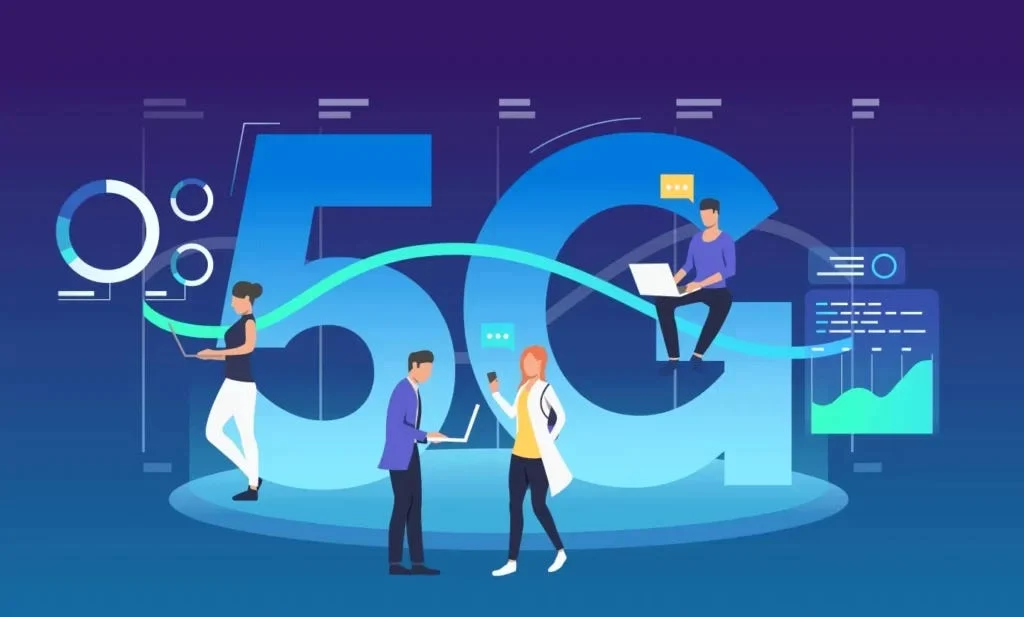Revolutionizing Connectivity: The Rise of 5G Networks has been a major topic of interest in recent years as the world prepares for the next generation of wireless technology. 5G networks are poised to bring about a significant shift in how we connect and communicate, offering faster speeds, lower latency, and the ability to support a massive number of connected devices. The deployment of 5G networks is expected to have a profound impact on various industries, from healthcare and transportation to entertainment and manufacturing. As the global demand for faster and more reliable connectivity continues to grow, the development and implementation of 5G technology have become a top priority for telecommunications companies and governments around the world.
The emergence of 5G networks has sparked curiosity and interest in the potential benefits and advancements they will bring. People are eager to understand how 5G will improve their everyday lives, from enabling seamless virtual reality experiences to enhancing the capabilities of smart cities and autonomous vehicles. Additionally, there is a growing interest in the implications of 5G for cybersecurity and privacy, as the increased connectivity and data transfer speeds introduce new challenges and considerations. As 5G networks continue to roll out across the globe, there is a sense of anticipation and excitement about the possibilities they will unlock for the future of connectivity.
The Evolution of Wireless Networks
Wireless networks have come a long way since the early days of 1G and 2G networks. These early networks were primarily focused on voice communication, with limited data capabilities. However, with the introduction of 3G and 4G networks, the focus shifted towards high-speed data transmission, enabling a wide range of mobile applications and services. Now, with the emergence of 5G networks, we are entering a new era of connectivity that promises even faster speeds, lower latency, and the ability to connect a massive number of devices simultaneously.
5G networks are expected to revolutionize the way we use and interact with technology, enabling new applications such as autonomous vehicles, smart cities, and the Internet of Things (IoT). The evolution of wireless networks has been driven by the increasing demand for connectivity and the need for faster, more reliable data transmission. As we continue to rely more on mobile devices for work, entertainment, and everyday tasks, the development of 5G networks is crucial for meeting the growing needs of users and businesses alike.
The Promise of 5G Technology
5G technology promises to deliver significant improvements over its predecessors, with projected speeds of up to 10 gigabits per second (Gbps) and ultra-low latency. This means that tasks such as downloading large files, streaming high-definition video, and gaming will be faster and smoother than ever before. Additionally, the low latency of 5G will enable real-time communication and interaction, making it possible to support applications that require instant responsiveness, such as virtual reality and augmented reality experiences.
Beyond speed and latency improvements, 5G technology also offers the potential to connect a massive number of devices within a given area, paving the way for the expansion of IoT and smart devices. This connectivity will enable advancements in various industries, including healthcare, manufacturing, transportation, and more. With the promise of 5G technology, we can expect a new wave of innovation and possibilities that will reshape the way we live and work.
Challenges and Obstacles in Implementing 5G Networks
While the potential of 5G networks is promising, there are several challenges and obstacles that need to be addressed in their implementation. One of the main challenges is the need for a dense infrastructure of small cells to support the high-frequency bands used by 5G. This requires significant investment and coordination among network operators, local governments, and other stakeholders to deploy the necessary infrastructure effectively.
Additionally, there are concerns about security and privacy in 5G networks, as the increased connectivity and reliance on IoT devices create new vulnerabilities. Ensuring the security of 5G networks will be crucial to prevent potential cyber threats and attacks. Furthermore, there are regulatory and spectrum allocation challenges that need to be navigated to enable the widespread deployment of 5G networks. Overcoming these obstacles will be essential for unlocking the full potential of 5G technology.
The Impact of 5G on Industries and Applications
5G technology is expected to have a transformative impact on various industries and applications. In healthcare, 5G networks can enable remote patient monitoring, telemedicine, and the use of advanced medical devices with real-time data transmission. This has the potential to improve access to healthcare and enhance patient outcomes. In manufacturing, 5G can support the implementation of smart factories with connected machines and processes, leading to increased efficiency and productivity.
Furthermore, 5G networks will pave the way for advancements in transportation, enabling connected and autonomous vehicles to communicate with each other and with infrastructure in real time. This can improve road safety, reduce traffic congestion, and enable new mobility services. Additionally, the use of augmented reality and virtual reality experiences will be enhanced by 5G, offering new possibilities for immersive entertainment, education, and training.
Global Deployment and Adoption of 5G Networks
The deployment and adoption of 5G networks are taking place on a global scale, with countries and network operators racing to roll out 5G infrastructure and services. While some regions have made significant progress in deploying 5G networks, others are still in the early stages of adoption. China, the United States, South Korea, and several European countries have been among the leaders in 5G deployment, with ongoing efforts to expand coverage and improve network capabilities.
As 5G networks continue to expand, the adoption of 5G-enabled devices and applications will play a crucial role in driving the growth of the ecosystem. This includes the development of 5G-compatible smartphones, tablets, IoT devices, and other connected technologies that can take advantage of the capabilities offered by 5G networks. The global deployment and adoption of 5G networks will shape the future of connectivity and enable new opportunities for innovation and economic growth.
The Future of Connectivity with 5G Networks
The future of connectivity with 5G networks holds great promise for reshaping the way we interact with technology and the world around us. With faster speeds, lower latency, and the ability to connect a massive number of devices, 5G networks will enable new applications and services that were previously not feasible. From smart cities and autonomous vehicles to immersive experiences and advanced healthcare solutions, 5G technology will unlock new possibilities for innovation and societal advancement.
As 5G networks continue to evolve and expand, we can expect to see a new wave of entrepreneurial and technological developments that leverage the capabilities of 5G. This includes the emergence of new business models, services, and experiences that cater to the growing demands of consumers and industries. The future of connectivity with 5G networks is bound to be dynamic and transformative, opening doors to unprecedented opportunities and driving the next phase of digital evolution.
| Topic | Description |
|---|---|
| What is 5G? | 5G is the fifth generation of cellular network technology, promising significantly faster data speeds, lower latency, and the ability to connect a massive number of devices simultaneously. |
| Benefits of 5G | 5G technology will enable advancements in various industries such as healthcare, transportation, and manufacturing. It will also pave the way for innovations like augmented reality and autonomous vehicles. |
| Challenges | Implementing 5G networks requires significant infrastructure upgrades and investments. Additionally, there are concerns about security and potential health risks associated with 5G technology. |
| Global Impact | 5G networks have the potential to transform the way we live and work, revolutionizing connectivity and powering the future of technology and communication on a global scale. |
SONUÇ
Revolutionizing Connectivity: The Rise of 5G Networks is a transformative development in the realm of telecommunications, promising faster speeds, lower latency, and widespread connectivity. While it presents numerous opportunities for innovation and advancement, it also brings about challenges related to infrastructure and security. Ultimately, 5G networks have the potential to reshape industries and impact the way we interact with technology on a global level.



